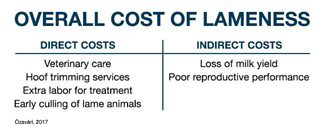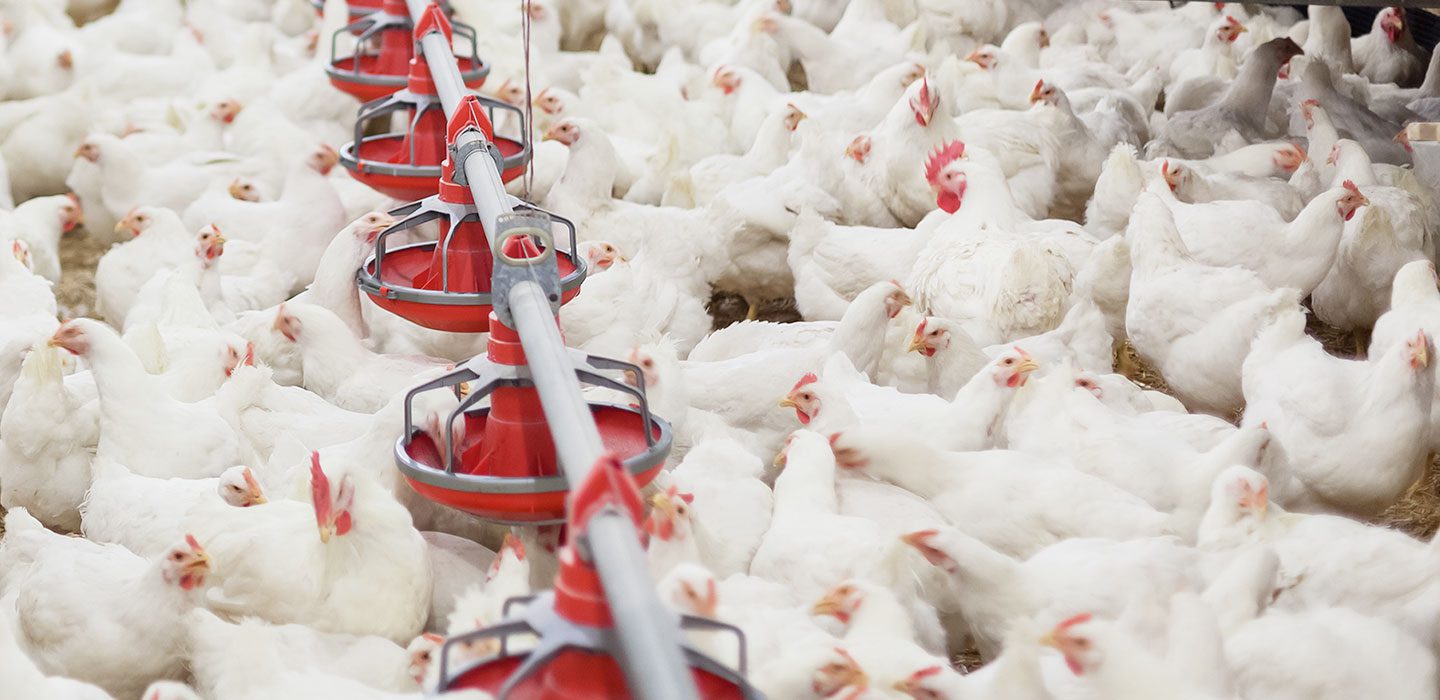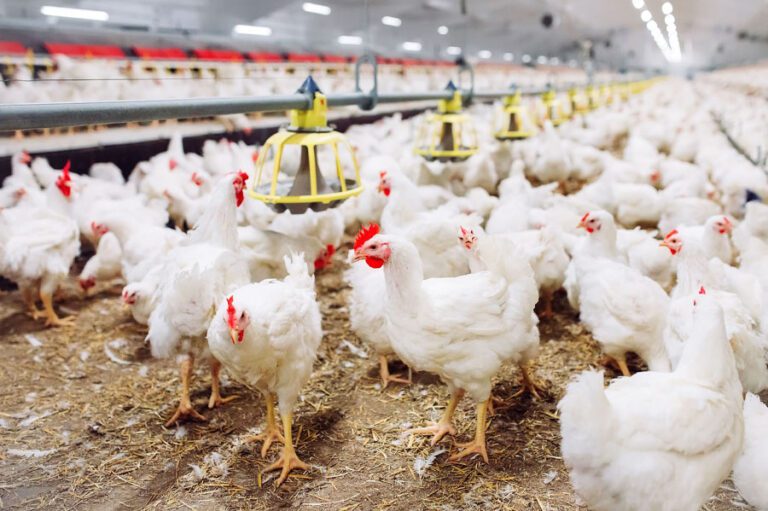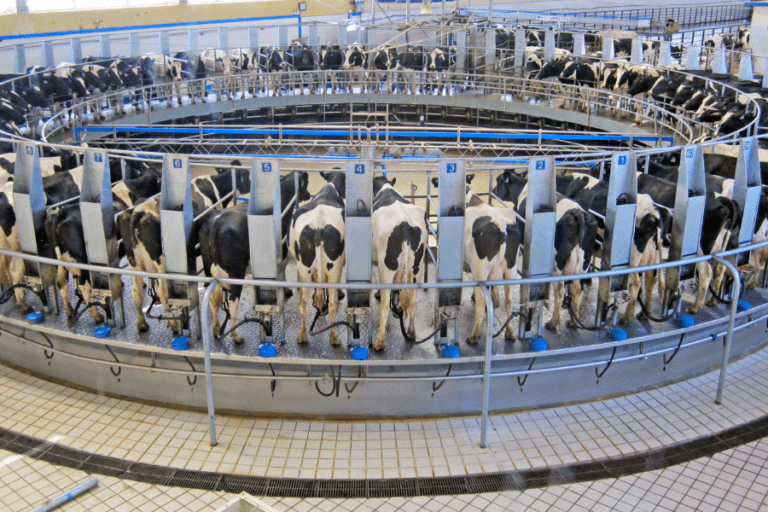Give Your Cows Strong Hooves to Prevent Lameness

Lameness is a costly, prevalent issue in dairies. Average costs per incidence of lameness are $420 to $1,055 USD (Shepley et al., 2021). While there are many ways of preventing and treating lameness, starting cows off right, structurally, through proper trace mineral supplementation is a great place to start. Due to its unique chemical structure, MINTREX® Bis-Chelated Trace Minerals deliver more copper, zinc, or manganese to the site of absorption, allowing for more mineral to be absorbed and subsequently utilized for productive purposes by the cow. Each mineral plays a key role in developing and maintaining the structural integrity of a cow’s hoof, making the hoof harder and less susceptible to lameness.
Findings shared at the Annual Dairy Science Meetings in 2021, by researchers from the University of Minnesota, highlighted the challenges to managing lameness on farms. This research identified that lameness is a complex management issue that necessitates all stakeholders for the farm to communicate and collaborate (Wynands et al., 2021).
Occurrences of lameness differ across the globe:
- 32% observed within farms in United Kingdom (Griffiths et al., 2018).
- 25% on organic farms in France (Sjöström et al., 2018).
- 31% in China (Chapinal et al., 2014).
- 41% in southern Brazil (Bran et al., 2019).
With the prevalence of lameness being well characterized, the impact on cow health and well-being is obvious, but the economic impact of lameness is often difficult to fully characterize.
Lameness ranks third among the principal economic issues in dairy production today (Enting et al., 1997). The economic impact of lameness includes direct costs as well as indirect costs as shown below (Ózsvári, 2017). Together these costs can result in a loss in gross profit from $420 to $1,055 USD per incidence of lameness (Shepley et al., 2021). Solutions to reduce not only the economic impact to the farm, but also the welfare concerns, associated with lameness are crucial to resolving the complex management issue that is lameness.

Impact of Trace Mineral Nutrition on Lameness
In Zhao et al., 2015, a total of 48 cows were utilized. Twenty-four of these cows were structurally sound, while the other 24 were considered lame. These were split evenly into 2 groups. Over 180 days, 1 group was fed MINTREX® Bis-Chelated Trace Minerals, and the other group was fed sulfates.
During the evaluation period, cows were monitored for change in gait score and hoof hardness. Focusing on the lame cows, at the initiation of the nutritional intervention, all cows exhibited a gait score of 3 or greater. Following 180 days of including the nutritional intervention, the gait score of 5 out of 12 cows supplemented with MINTREX® Bis-Chelated Trace Minerals exhibited a gait score that had decreased to 2 or below while only 1 cow supplemented with sulfate trace minerals exhibited a gait score that had decreased (Table 1).

When hoof hardness was evaluated, we saw that both structurally sound and lame cows supplemented with MINTREX® Bis-Chelated Trace Minerals exhibited 15% increased hoof hardness after 180 days when hoof hardness on day 0 averaged 28.8 durometer unit. In contrast, those supplemented with sulfates saw no significant increase (Figure 1).
The biology behind these benefits observed with MINTREX® bis-chelated trace minerals is linked to the role that copper, manganese and zinc have in the biology of the hoof. More specifically the 3 minerals are involved in keratinization, the process that results in healthy horn formation. Keratinization is needed as it allows for the turnover of keratin, a protein that is the major component of the protective matrix of hooves (Fraser and MacRae, 1980).
 |
Copper plays a role in thiol oxidase, an enzyme found in keratinizing horn cells (Lean et al., 2013). Thiol oxidase allows for integrity and rigidity of the keratin cell matrix within the hoof, resulting in a strong hoof (Tomilson et al., 2004). |
 |
Just like copper, zinc also plays a role in keratinization through the action of enzymes. Zinc is an activator of Zn metalloenzymes that aid in keratinocyte differentiation while playing a role in the final development of keratinocytes through regulating calmodulin (Lean et al., 2013). Zinc is also involved in structural protein formation in keratin (Tomilson et al., 2004). |
 |
The role manganese has in hooves is more indirect, but still involves enzymes, through activating enzymes that supply cellular energy to keratinocytes allowing for good quality horn tissue to be produced (Tomilson et al., 2004). |
With the unique roles copper, zinc, and manganese have in supporting strong hoof tissue, the previously mentioned benefits realized with MINTREX® bis-chelated trace minerals demonstrate greater bioavailability than sulfates (Zhao et al., 2015). Due to their unique chemical structure, MINTREX® bis-chelated trace minerals deliver more copper, zinc, or manganese to the site of absorption, allowing for more mineral to be absorbed and subsequently be utilized for productive purposes by the cow.
Learn more by contacting your NOVUS representative or through our contact form.
References:
Adams, A., J. Lombard, C. Fossler, I. Roman-Muniz, and C. Kopral. 2016. Associations between housing and management practices and the prevalence of lameness, hock lesions, and thin cows on US dairy operations. J. Dairy Sci. 100: 2119-2136. DOI: https://doi.org/10.3168/jds.2016-11517
Bran, J.A., J.H.C. Costa, M.A.G. von Keyserlingk, and M.J. Hötzel. 2019. Factors associated with lameness prevalence in lactating cows housed in freestall and compost-bedded pack dairy farms in southern Brazil. Prev. Vet. Med. 172: 1-9. DOI: https://doi.org/10.1016/j.prevetmed.2019.104773
Chapinal, N., Y. Liang, D.M. Weary, Y. Wang, and M.A.G. von Keyserlingk. 2014. Risk factors for lameness and hock injuries in Holstein herds in China. J. Dairy Sci. 97: 4309-4316. DOI: s.2014-8089″>https://doi.org/10.3168/jds.2014-8089
Enting, H., D. Kooji, A.A. Dijkhuizen, R.B.M. Huirne, and E.N. Noordhuizen-Stassen. 1997. Economic losses due to clinical lameness in dairy cattle. Livest. Prod. Sci. 49:259-267. https://doi.org/10.1016/S0301-6226(97)00051-1
Fraser, R.D.B., and T.P. MacRae. 1980. Molecular structure and mechanical properties of keratins. Pages 211-246 in The Mechanical Properties of Biological Materials. J.F. Vincent and D. Currey, ed. Cambridge University Press, Cambridge, UK.
Griffiths, B.E., D.G. White, and G. Oikonomou. 2018. A cross-sectional study into the prevalence of dairy cattle lameness and associated herd-level risk factors in England and wales. Front. Vet. Sci. 5: 1-8. DOI: https://doi.org/10.3389/fvets.2018.00065
Lean, I.J., C.T. Westwood, H.M. Golder, and J.J. Vermunt. 2013. Impact of nutrition on lameness and claw health in cattle. Livest. Sci. 156: 71-87. DOI: https://doi.org/10.1016/j.livsci.2013.06.006
Ózsvári, L. 2017. Economic cost of lameness in dairy cattle herds. J. Dairy Vet. Anim. Res. 6: 176-184. DOI: https://doi.org/10.15406/jdvar.2017.06.00176
Shepley, E., M.A. Puerto, R.I. Cue, D. Warner, and E. Vasseur. 2021. The hidden cost of disease: Analyzing the economic losses due to the first instance of mastitis or lameness in multiparous cows. J. Dairy Sci. 104(Suppl. 1): 115 (Abstract).
Sjöström, K., N. Fall, I. Blanco-Penedo, J.E. Duval, M. Krieger, and U. Emanuelson. 2018. Lameness prevalence and risk factors in organic dairy herds in four European countries. Livestock Sci. 208: 44-50. DOI: https://doi.org/10.1016/j.livsci.2017.12.009
Tomlinson, D.J., C.H. Mulling, and T.M. Fakler. 2004. Invited Review: Formation of keratins in the bovine claw: Roles of hormones, minerals, and vitamins in function claw integrity. J. Dairy Sci. 87: 797-809. DOI: https://doi.org/10.3168/jds.S0022-0302(04)73223-3
Von Keyserlingk, M.A.G., A. Barrientos, K. Ito, E. Galo, and D.M. Weary. 2012. Benchmarking cow comfort on North American freestall dairies: Lameness, leg injuries, lying time, facility design, and management for high-producing Holstein dairy cows. J. Dairy Sci. 95: 7399-7408. DOI: https://doi.org/10.3168/jds.2012-5807
Wynands, E., S. Roche, G. Cramer, and B. Ventura. 2021. Dairy farmer, veterinarian, and hoof trimmer perceptions of barriers in lameness management. J. Dairy Sci. 104(Suppl. 1): 66 (Abstract).
Zhao, X.J., Z.P. Li, J.H. Wang, X.M. Xing, Z.Y. Wang, L. Wang, and Z.H. Wang. 2015. Effects of chelated Zn/Cu/Mn on redox status, immune responses and hoof health in lactating Holstein cows. J. Vet. Sci. 16: 439-446. DOI: https://doi.org/10.4142/jvs.2015.16.4.439

Nutrição Inteligente para o seu negócio
Mais ciência. Mais conhecimento. Mais inspiração. Mais maneiras de você alimentar o mundo.




